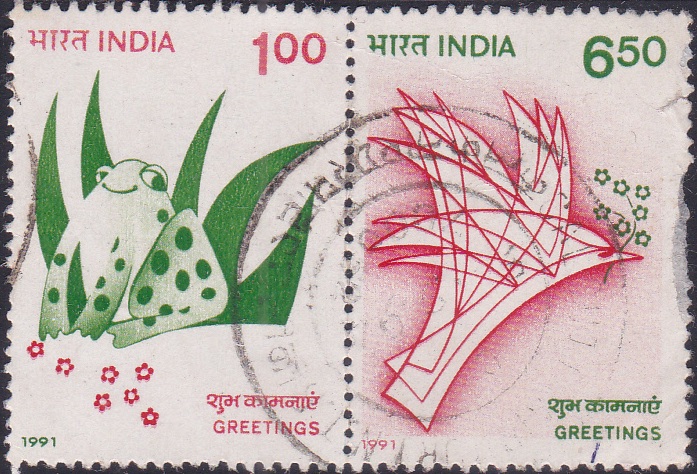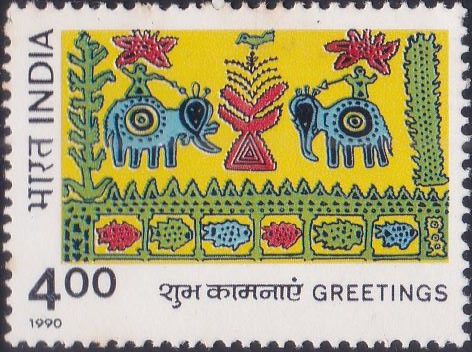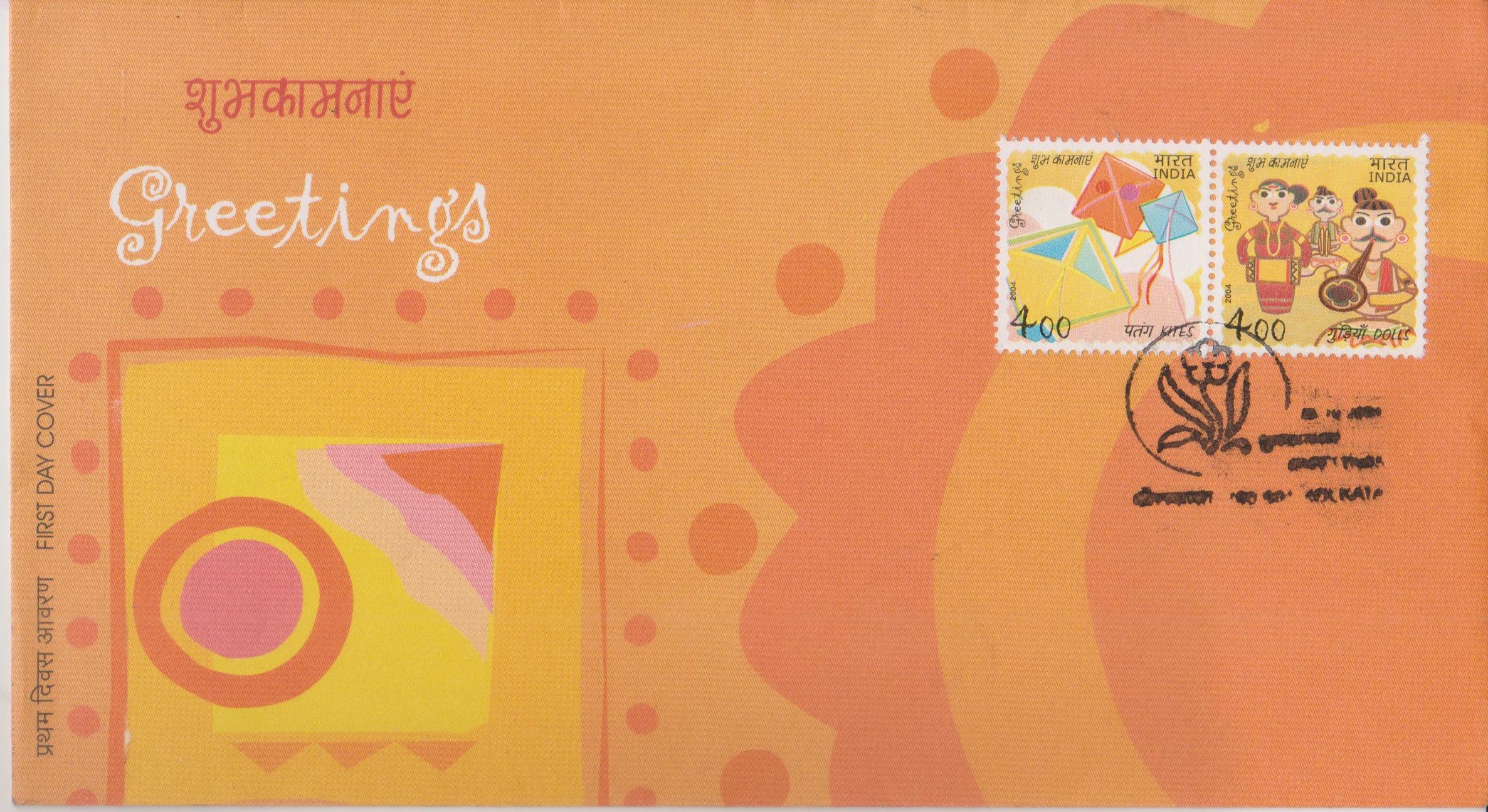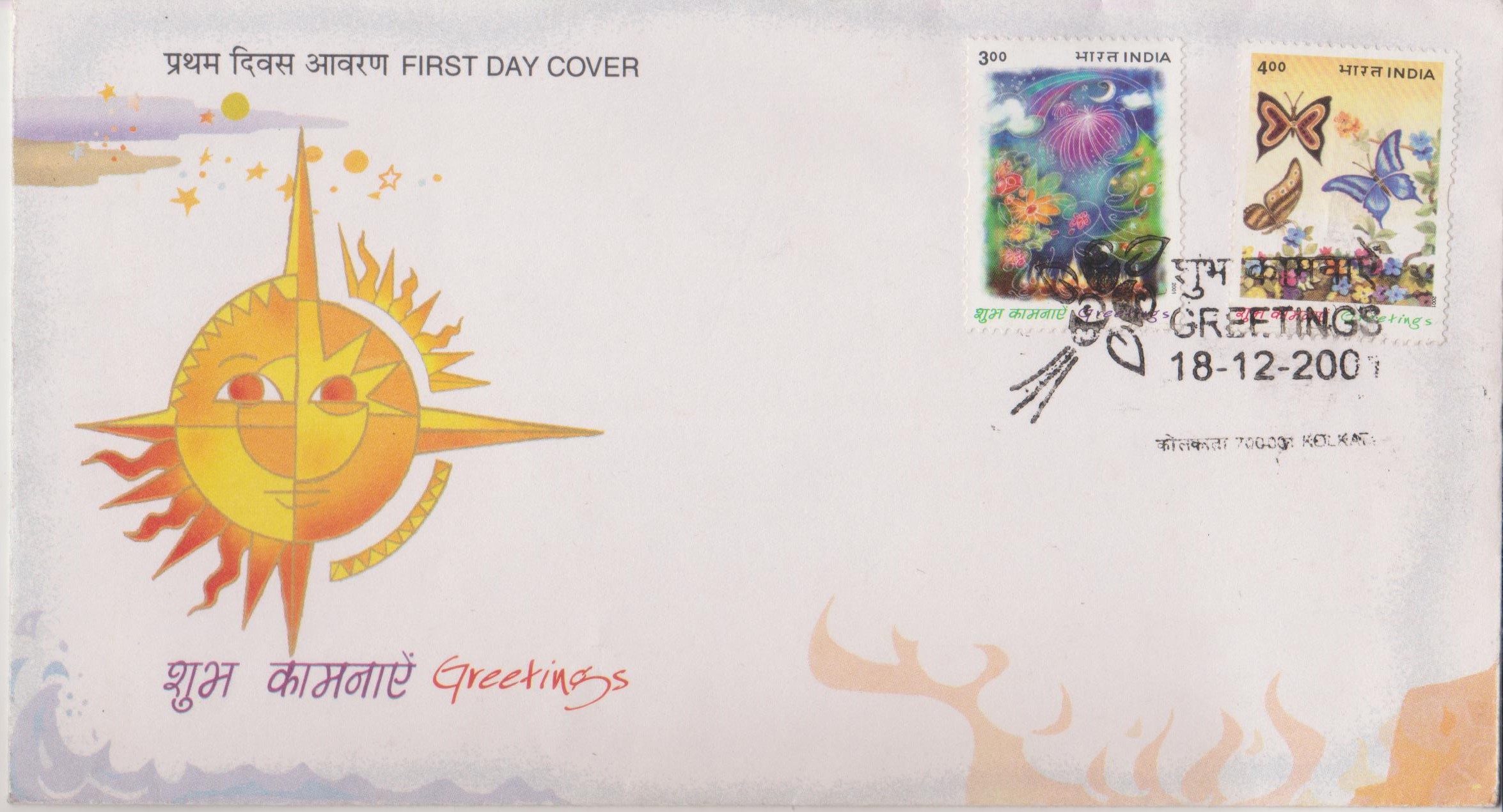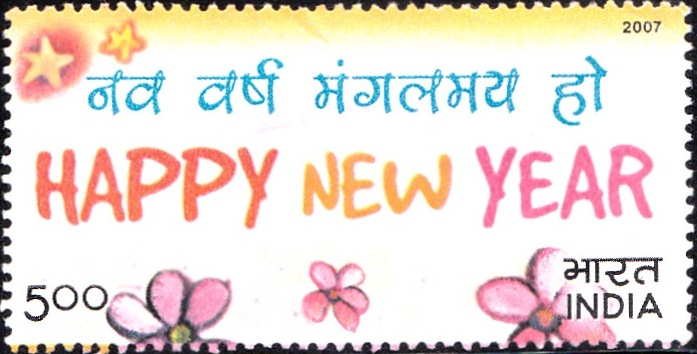
India Greetings – Happy New Year 2008
Complete Set of 5 nos of commemorative postage stamps on the Season’s Greetings on Happy New Year :
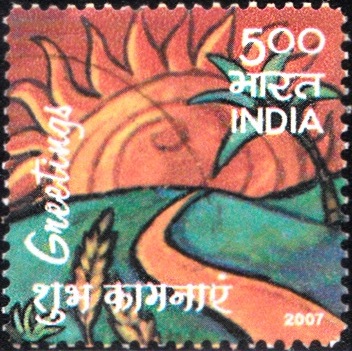


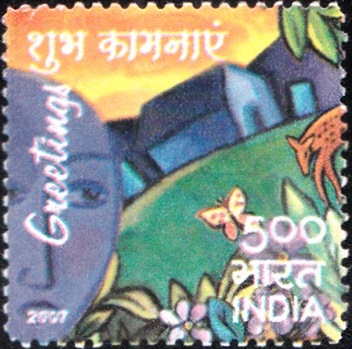
 Issued by India
Issued by India
Issued on Dec 15, 2007
Issued for : The colourful stamps on Season’s Greetings and Happy New Year have been designed to represent different elements of nature, and their synchronic interplay that sustains life on earth. This set of five stamps and five maxim cards are being released to carry the good wishes for a happy and prosperous new year.
Credits :
Stamp & FDC : Kamleshwar Singh
Cancellation : Alka Sharma
Type : Stamp, Postal Used
Colour : Multi Colour
Denomination : 500 Paise each
Stamps Printed : 3.0 Million, 3.0 Million, 3.0 Million, 3.0 Million & 5.0 Million
Printing Process : Photogravure
Printer : India Security Press, Nasik
About :
- Festivities and celebrations with their panoramic hues and shades pass the Indian landscape in a never ending procession. A vast theatre of contrasting seasons, a rainbow of customs and traditions, a colourful garland of languages and costumes, India is a world in itself. After the monsoon clouds retreat filling the rivers, ponds, and fields and the hearts of peasants and farmers with hope, joy and anticipation of a good harvest, the entire country gets into blossoming of joyous raptures to greet the new year.
- While 1st of January is the New Year’s Day in many parts of the world, different cultures have different interpretations of the new year depending upon the respective calendar system. India still looks at the rain bearing clouds, the solar and lunar movements, the ancient ballads and mythologies and above all the ripening of grains in the fields. The Assamese New Year is Bihu, the Bengali Nabo Varsho is 1st of Baishakh, Gudipadava is the first day of new year in Maharashtra, Ugadi is celebrated in Andhra Pradesh, Puthandu is the new year in Tamil Nadu, Pooram Vishu in Kerala and, all more or less coincide with the Vaishakh or Chaitra months in March / April.
- The new year is in fact one of the longest surviving festival traditions in the human history. The ancient Babylonians observed this approximately 4000 years ago. The ancient Roman calendar had only ten months and started the year on the 1st of March. The months January and February were added around 713 BC. In 153 BC 1st January was considered as the beginning of the year, and it continued even after adoption of the Julian calendar in 45 BC. With the introduction of the Gregorian calendar in 1582 AD acceptance of 1st January as the new year’s day gradually increased, though it still took a long time. The celebrations, festivities and the tradition of greeting and meeting friends and family apart from prayers and worships etc., is a common feature across the globe.
- The human tendency to greet the onset of the year can perhaps be traced to the primal joy of experiencing the first rain drops of the season, seeing the first leaves germinating from the seeds, hearing the first song of the bird that greets a new dawn, or watching a new rivulet borne out of the melting icicles.



